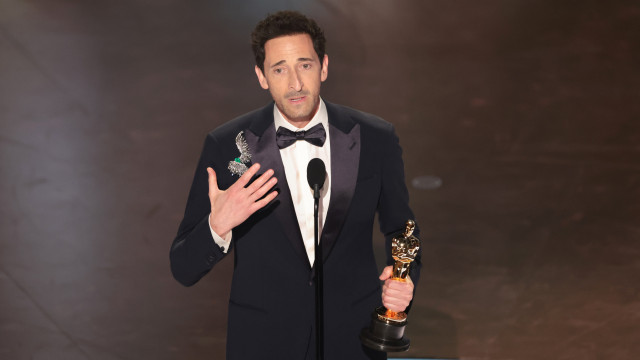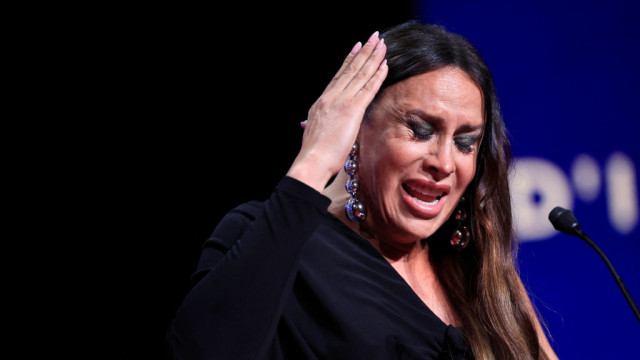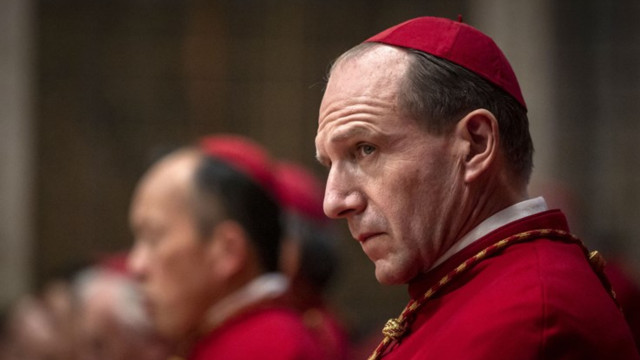






























See Also
See Again
© Getty Images
0 / 31 Fotos
Queen Elizabeth The Queen Mother (1900-2002)
- It’s not just the royals of the past that engaged with spiritualism and the occult. King George VI died in 1952, resulting in Queen Elizabeth II taking the throne at the age of 25. The following year, the Queen Mother, Queen Elizabeth II, and a few other high-ranking royals reportedly met with a medium named Lilian Bailey.
© Getty Images
1 / 31 Fotos
Queen Elizabeth The Queen Mother (1900-2002)
- According to a royal biographer, the Queen Mother was the driving force behind the meeting and was keen to make contact with her recently deceased husband. Bailey claimed to have a spirit guide who was a captain of the Grenadier Guards killed during World War I.
© Getty Images
2 / 31 Fotos
Queen Elizabeth The Queen Mother (1900-2002)
- The Queen Mother was said to be most impressed with Bailey’s services and scheduled further séances with her. She was born the year before Queen Victoria died and grew up through two world wars. It was a time when grief was so widespread that spiritualism was a booming business, so she may have been more open to such mystical ideas than her daughter.
© Getty Images
3 / 31 Fotos
Queen Victoria (1819-1901)
- Queen Victoria was one of Britain’s longest-ruling monarchs and stayed in power from 1837 until she died in 1901. Victoria is famous for her deep love for her husband, Prince Albert. She was destroyed by Albert’s death in 1861, and remained in mourning for him for the rest of her life.
© Getty Images
4 / 31 Fotos
Queen Victoria (1819-1901)
- Victoria wore “mourning jewelry” that contained photos of Albert and locks of his hair. She also attempted to get in touch with his spirit, calling upon the service of the many mediums practicing at the time. Spiritualism was rife during the reign of Queen Victoria. A medium named Robert James Lees claimed to have been visited by Prince Albert during a séance shortly after his death. Lees was only 13 years old.
© Getty Images
5 / 31 Fotos
Queen Victoria (1819-1901)
- Nonetheless, Queen Victoria entertained the possibility and held multiple séances with him. He reportedly came up with information and pet names that no one other than Prince Albert could have known. The Queen continued to use séances to communicate with her deceased husband and even sought his opinion on political matters. When she died, 40 years after her husband, Queen Victoria left a long list of bizarre burial requests that confirmed her spiritual beliefs.
© Getty Images
6 / 31 Fotos
Tsar Nicholas II (1868-1918)
- When we think of mysticism in the Russian royal court, Rasputin is the first name that comes to mind. However, the Romanov’s interest in the occult started long before he made an appearance. Tsar Nicholas II and his wife, Alexandra Feodorovna, looked for otherworldly help in conceiving a male heir.
© Getty Images
7 / 31 Fotos
Tsar Nicholas II (1868-1918)
- Their court was soon visited by a number of strange figures, such as Mantronuskha the Barefooted. She was an elderly peasant woman who wandered about constantly rambling, sometimes coming out with a prediction about a male heir to the throne. There was also a meteorologist called Demchinsky whom Nicholas reportedly believed could predict the future as well as the weather.
© Getty Images
8 / 31 Fotos
Tsar Nicholas II (1868-1918)
- These are just two examples of the influences the royal family had turned to in their time of need. Superstitions and mysticism were common in Russian culture at the time, but most of their 'consultants' came with at least a thin veil of Orthodox Christianity to make their other practices more palatable.
© Getty Images
9 / 31 Fotos
Alexandra Feodorovna (1872-1918)
- The notorious Grigori Rasputin was first and foremost a self-proclaimed holy man. He was a wandering peasant who claimed to be able to predict the future and heal the sick. Eventually, he ended up in Saint Petersburg and was introduced to the royal family, who welcomed many such figures in their court.
© Getty Images
10 / 31 Fotos
Alexandra Feodorovna (1872-1918)
- Nicholas and Alexandra were desperate to preserve the health of their son and heir, Alexei, who suffered from hemophilia. They believed that Rasputin had the power to ease his suffering and called him to the palace whenever Alexei had a bleeding episode. Rasputin made predictions that he was irrevocably tied to their son’s destiny and the future of their dynasty.
© Getty Images
11 / 31 Fotos
Alexandra Feodorovna (1872-1918)
- Rasputin exercised incredible control over Russia through his grip on the royal family, particularly when Nicholas left the country to fight in World War I. This left Alexandra in power with Rasputin acting as her closest advisor, even though he was merely a self-proclaimed healer who had never even learned to read. If he did have powers, that might explain why it was so difficult to kill him. His adversaries tried to poison him and shoot him, but he survived these attempts on his life. He finally died after being shot and thrown into a freezing river in 1916.
© Public Domain
12 / 31 Fotos
Queen Elizabeth I (1533-1603) - Queen Elizabeth I employed a court astrologer named John Dee, although there is great debate about whether he was a scholar or a mystic. During his career, he amassed the largest private library in the UK and worked with many of the most prominent scientists and mathematicians of the time. He was considered an expert in these fields as well as in cartography and navigation.
© Shutterstock
13 / 31 Fotos
Queen Elizabeth I (1533-1603)
- However, Dee was also rumored to commune with angels and practice numerology, a mystical field of study that searches for a divine connection between certain numbers and events. Queen Elizabeth I is believed to have used his knowledge of numerology in choosing the date for her coronation (January 15, 1559). Dee signed his letters to the Queen with the number ‘007,’ something Ian Fleming would later repurpose in his James Bond books.
© Getty Images
14 / 31 Fotos
Queen Elizabeth I (1533-1603)
- An artist named Henry Gillard Glindoni created a painting titled ‘John Dee Performing an Experiment before Elizabeth I’ during the Victorian era. In 2016, an x-ray of the painting revealed that an earlier version included a ring of human skulls in his ‘experiment.’ The discovery raised further controversy about John Dee's practices.
© Getty Images
15 / 31 Fotos
Charles VII of France (1403-1461)
- King Charles VII ruled over medieval France, a time when witchcraft and the occult were punishable by death. However, the king had immunity from such punitive measures. Many accounts suggest that Charles was fascinated by the occult.
© Getty Images
16 / 31 Fotos
Charles VI of France (1368-1422)
- He had an extensive library of texts on astrology, although astrology existed in the gray area between science and mysticism at the time. Charles VII may have been influenced by his father, King Charles VI. Charles VI was known as “the mad” king and was severely mentally unstable. He was obsessed with alchemy and the occult during his reign. One historian wrote that his court was filled with “alchymists, conjurors, astrologers, and quacks of every description.”
© Getty Images
17 / 31 Fotos
Charles VI of France (1368-1422)
- Charles VI is said to have made several attempts to find the mythical philosopher’s stone, which was believed to turn simple metals into gold or silver.
© Getty Images
18 / 31 Fotos
Catherine de' Medici (1519-1589)
- Catherine de' Medici was born into one of the most prestigious families in Italy and married King Henry II of France in 1533. The Medicis were known for their enormous wealth and power, but were also notorious for their ruthless ways.
© Getty Images
19 / 31 Fotos
Catherine de' Medici (1519-1589)
- When Catherine’s husband died in a jousting accident and she was left acting as Queen Regent for her young son, she turned to her royal astrologer for advice. He reportedly looked into a magic mirror and told her that three of her sons would reign as king for a short time, after which a cousin would take the thrown. This prediction would prove accurate.
© Getty Images
20 / 31 Fotos
Catherine de' Medici (1519-1589)
- After her death, Catherine left behind a reputation as a sinister queen who dabbled in the dark arts. Many questioned her choice of company at court, which included the likes of the famous seer Nostradamus (this painting depicts Catherine and Nostradamus together). She also kept several astronomers close to her who were believed to be necromancers and practitioners of the dark arts.
© Getty Images
21 / 31 Fotos
Rudolf II (1552-1612)
- Rudolf II, Holy Roman Emperor, was a notoriously curious ruler who established the city of Prague as a center of knowledge and creativity. Like many rulers in history, he was also obsessed with alchemy and mystical philosophies. He had countless alchemists on his payroll.
© Getty Images
22 / 31 Fotos
Rudolf II (1552-1612)
- Rudolf engaged in a lifelong quest to find the fabled philosopher's stone and spent huge amounts of money in doing so. He even enlisted the help of Queen Elizabeth’s beloved John Dee! He employed other famous seers and alchemists such as Nostradamus and Michael Sendivogius.
© Getty Images
23 / 31 Fotos
Rudolf II (1552-1612)
- Rudolf endowed Prague with a magic and mysticism that still exists today. Tourists can visit Alchemists’ Alley within the grounds of Prague Castle.
© Getty Images
24 / 31 Fotos
King Saul (11th century BCE)
- King Saul was the first king of Israel. He ruled during the 11th century BCE and is mentioned in the Old Testament of the Bible. Saul outlawed magic in his kingdom and all magic practitioners were banned. However, he made an exception for himself…
© Getty Images
25 / 31 Fotos
King Saul (11th century BCE)
- When Saul was preparing for battle against the Philistines, he was scared to the leave the outcome up to fate. He contacted a woman known as the Witcher of Endor to help him contact otherworldly spirits for advice. He guaranteed that she wouldn’t be banished or killed, and she conjured the spirit of a dead leader named Samuel.
© Getty Images
26 / 31 Fotos
King Saul (11th century BCE)
- The story goes that Samuel was none too pleased about being awakened. He told Saul that his rule was no longer supported by God, and that he and his sons would die in battle the next day. Not the result he was hoping for!
© Getty Images
27 / 31 Fotos
Gunnhild (c. 910 – c. 980 CE)
- Gunnhild was a Viking queen from Iceland who had a reputation for using sorcery and curses. While there are few historic records from 10th-century Scandinavia, it’s believed that Gunnhild did exist. Magic played an important role in Viking culture at this time, so it’s likely that mystical powers were attributed to her.
© Public Domain
28 / 31 Fotos
Gunnhild (c. 910 – c. 980 CE)
- According to the Icelandic tale ‘Egil's Saga,’ Gunnhild was well versed in the magic arts and used curses and poisons to trip up her enemies. She is also said to have been a soothsayer, meaning she could see into the future and tell prophecies.
© Public Domain
29 / 31 Fotos
Gunnhild (c. 910 – c. 980 CE)
- Gunnhild was widely feared for her magical powers and was eventually killed by King Harald Bluetooth of Denmark. He had her thrown into a bog to drown for her crimes. A female bog body was recovered in 1835, and many believed it belonged to Gunnhild! Sources: (Grunge) (Britannica) (History) (History Extra) (Daily Mail) See also: Historical figures whose bodies have never been found
© Getty Images
30 / 31 Fotos
© Getty Images
0 / 31 Fotos
Queen Elizabeth The Queen Mother (1900-2002)
- It’s not just the royals of the past that engaged with spiritualism and the occult. King George VI died in 1952, resulting in Queen Elizabeth II taking the throne at the age of 25. The following year, the Queen Mother, Queen Elizabeth II, and a few other high-ranking royals reportedly met with a medium named Lilian Bailey.
© Getty Images
1 / 31 Fotos
Queen Elizabeth The Queen Mother (1900-2002)
- According to a royal biographer, the Queen Mother was the driving force behind the meeting and was keen to make contact with her recently deceased husband. Bailey claimed to have a spirit guide who was a captain of the Grenadier Guards killed during World War I.
© Getty Images
2 / 31 Fotos
Queen Elizabeth The Queen Mother (1900-2002)
- The Queen Mother was said to be most impressed with Bailey’s services and scheduled further séances with her. She was born the year before Queen Victoria died and grew up through two world wars. It was a time when grief was so widespread that spiritualism was a booming business, so she may have been more open to such mystical ideas than her daughter.
© Getty Images
3 / 31 Fotos
Queen Victoria (1819-1901)
- Queen Victoria was one of Britain’s longest-ruling monarchs and stayed in power from 1837 until she died in 1901. Victoria is famous for her deep love for her husband, Prince Albert. She was destroyed by Albert’s death in 1861, and remained in mourning for him for the rest of her life.
© Getty Images
4 / 31 Fotos
Queen Victoria (1819-1901)
- Victoria wore “mourning jewelry” that contained photos of Albert and locks of his hair. She also attempted to get in touch with his spirit, calling upon the service of the many mediums practicing at the time. Spiritualism was rife during the reign of Queen Victoria. A medium named Robert James Lees claimed to have been visited by Prince Albert during a séance shortly after his death. Lees was only 13 years old.
© Getty Images
5 / 31 Fotos
Queen Victoria (1819-1901)
- Nonetheless, Queen Victoria entertained the possibility and held multiple séances with him. He reportedly came up with information and pet names that no one other than Prince Albert could have known. The Queen continued to use séances to communicate with her deceased husband and even sought his opinion on political matters. When she died, 40 years after her husband, Queen Victoria left a long list of bizarre burial requests that confirmed her spiritual beliefs.
© Getty Images
6 / 31 Fotos
Tsar Nicholas II (1868-1918)
- When we think of mysticism in the Russian royal court, Rasputin is the first name that comes to mind. However, the Romanov’s interest in the occult started long before he made an appearance. Tsar Nicholas II and his wife, Alexandra Feodorovna, looked for otherworldly help in conceiving a male heir.
© Getty Images
7 / 31 Fotos
Tsar Nicholas II (1868-1918)
- Their court was soon visited by a number of strange figures, such as Mantronuskha the Barefooted. She was an elderly peasant woman who wandered about constantly rambling, sometimes coming out with a prediction about a male heir to the throne. There was also a meteorologist called Demchinsky whom Nicholas reportedly believed could predict the future as well as the weather.
© Getty Images
8 / 31 Fotos
Tsar Nicholas II (1868-1918)
- These are just two examples of the influences the royal family had turned to in their time of need. Superstitions and mysticism were common in Russian culture at the time, but most of their 'consultants' came with at least a thin veil of Orthodox Christianity to make their other practices more palatable.
© Getty Images
9 / 31 Fotos
Alexandra Feodorovna (1872-1918)
- The notorious Grigori Rasputin was first and foremost a self-proclaimed holy man. He was a wandering peasant who claimed to be able to predict the future and heal the sick. Eventually, he ended up in Saint Petersburg and was introduced to the royal family, who welcomed many such figures in their court.
© Getty Images
10 / 31 Fotos
Alexandra Feodorovna (1872-1918)
- Nicholas and Alexandra were desperate to preserve the health of their son and heir, Alexei, who suffered from hemophilia. They believed that Rasputin had the power to ease his suffering and called him to the palace whenever Alexei had a bleeding episode. Rasputin made predictions that he was irrevocably tied to their son’s destiny and the future of their dynasty.
© Getty Images
11 / 31 Fotos
Alexandra Feodorovna (1872-1918)
- Rasputin exercised incredible control over Russia through his grip on the royal family, particularly when Nicholas left the country to fight in World War I. This left Alexandra in power with Rasputin acting as her closest advisor, even though he was merely a self-proclaimed healer who had never even learned to read. If he did have powers, that might explain why it was so difficult to kill him. His adversaries tried to poison him and shoot him, but he survived these attempts on his life. He finally died after being shot and thrown into a freezing river in 1916.
© Public Domain
12 / 31 Fotos
Queen Elizabeth I (1533-1603) - Queen Elizabeth I employed a court astrologer named John Dee, although there is great debate about whether he was a scholar or a mystic. During his career, he amassed the largest private library in the UK and worked with many of the most prominent scientists and mathematicians of the time. He was considered an expert in these fields as well as in cartography and navigation.
© Shutterstock
13 / 31 Fotos
Queen Elizabeth I (1533-1603)
- However, Dee was also rumored to commune with angels and practice numerology, a mystical field of study that searches for a divine connection between certain numbers and events. Queen Elizabeth I is believed to have used his knowledge of numerology in choosing the date for her coronation (January 15, 1559). Dee signed his letters to the Queen with the number ‘007,’ something Ian Fleming would later repurpose in his James Bond books.
© Getty Images
14 / 31 Fotos
Queen Elizabeth I (1533-1603)
- An artist named Henry Gillard Glindoni created a painting titled ‘John Dee Performing an Experiment before Elizabeth I’ during the Victorian era. In 2016, an x-ray of the painting revealed that an earlier version included a ring of human skulls in his ‘experiment.’ The discovery raised further controversy about John Dee's practices.
© Getty Images
15 / 31 Fotos
Charles VII of France (1403-1461)
- King Charles VII ruled over medieval France, a time when witchcraft and the occult were punishable by death. However, the king had immunity from such punitive measures. Many accounts suggest that Charles was fascinated by the occult.
© Getty Images
16 / 31 Fotos
Charles VI of France (1368-1422)
- He had an extensive library of texts on astrology, although astrology existed in the gray area between science and mysticism at the time. Charles VII may have been influenced by his father, King Charles VI. Charles VI was known as “the mad” king and was severely mentally unstable. He was obsessed with alchemy and the occult during his reign. One historian wrote that his court was filled with “alchymists, conjurors, astrologers, and quacks of every description.”
© Getty Images
17 / 31 Fotos
Charles VI of France (1368-1422)
- Charles VI is said to have made several attempts to find the mythical philosopher’s stone, which was believed to turn simple metals into gold or silver.
© Getty Images
18 / 31 Fotos
Catherine de' Medici (1519-1589)
- Catherine de' Medici was born into one of the most prestigious families in Italy and married King Henry II of France in 1533. The Medicis were known for their enormous wealth and power, but were also notorious for their ruthless ways.
© Getty Images
19 / 31 Fotos
Catherine de' Medici (1519-1589)
- When Catherine’s husband died in a jousting accident and she was left acting as Queen Regent for her young son, she turned to her royal astrologer for advice. He reportedly looked into a magic mirror and told her that three of her sons would reign as king for a short time, after which a cousin would take the thrown. This prediction would prove accurate.
© Getty Images
20 / 31 Fotos
Catherine de' Medici (1519-1589)
- After her death, Catherine left behind a reputation as a sinister queen who dabbled in the dark arts. Many questioned her choice of company at court, which included the likes of the famous seer Nostradamus (this painting depicts Catherine and Nostradamus together). She also kept several astronomers close to her who were believed to be necromancers and practitioners of the dark arts.
© Getty Images
21 / 31 Fotos
Rudolf II (1552-1612)
- Rudolf II, Holy Roman Emperor, was a notoriously curious ruler who established the city of Prague as a center of knowledge and creativity. Like many rulers in history, he was also obsessed with alchemy and mystical philosophies. He had countless alchemists on his payroll.
© Getty Images
22 / 31 Fotos
Rudolf II (1552-1612)
- Rudolf engaged in a lifelong quest to find the fabled philosopher's stone and spent huge amounts of money in doing so. He even enlisted the help of Queen Elizabeth’s beloved John Dee! He employed other famous seers and alchemists such as Nostradamus and Michael Sendivogius.
© Getty Images
23 / 31 Fotos
Rudolf II (1552-1612)
- Rudolf endowed Prague with a magic and mysticism that still exists today. Tourists can visit Alchemists’ Alley within the grounds of Prague Castle.
© Getty Images
24 / 31 Fotos
King Saul (11th century BCE)
- King Saul was the first king of Israel. He ruled during the 11th century BCE and is mentioned in the Old Testament of the Bible. Saul outlawed magic in his kingdom and all magic practitioners were banned. However, he made an exception for himself…
© Getty Images
25 / 31 Fotos
King Saul (11th century BCE)
- When Saul was preparing for battle against the Philistines, he was scared to the leave the outcome up to fate. He contacted a woman known as the Witcher of Endor to help him contact otherworldly spirits for advice. He guaranteed that she wouldn’t be banished or killed, and she conjured the spirit of a dead leader named Samuel.
© Getty Images
26 / 31 Fotos
King Saul (11th century BCE)
- The story goes that Samuel was none too pleased about being awakened. He told Saul that his rule was no longer supported by God, and that he and his sons would die in battle the next day. Not the result he was hoping for!
© Getty Images
27 / 31 Fotos
Gunnhild (c. 910 – c. 980 CE)
- Gunnhild was a Viking queen from Iceland who had a reputation for using sorcery and curses. While there are few historic records from 10th-century Scandinavia, it’s believed that Gunnhild did exist. Magic played an important role in Viking culture at this time, so it’s likely that mystical powers were attributed to her.
© Public Domain
28 / 31 Fotos
Gunnhild (c. 910 – c. 980 CE)
- According to the Icelandic tale ‘Egil's Saga,’ Gunnhild was well versed in the magic arts and used curses and poisons to trip up her enemies. She is also said to have been a soothsayer, meaning she could see into the future and tell prophecies.
© Public Domain
29 / 31 Fotos
Gunnhild (c. 910 – c. 980 CE)
- Gunnhild was widely feared for her magical powers and was eventually killed by King Harald Bluetooth of Denmark. He had her thrown into a bog to drown for her crimes. A female bog body was recovered in 1835, and many believed it belonged to Gunnhild! Sources: (Grunge) (Britannica) (History) (History Extra) (Daily Mail) See also: Historical figures whose bodies have never been found
© Getty Images
30 / 31 Fotos
Famous royals and their interest in the occult
From participating in séances to consulting self-proclaimed healers and mystics
© Getty Images
The divine right of kings was central to the power wielded by European monarchs throughout history. The belief that the king or queen was chosen to rule by God bestowed them with divine power, raising them above other humans and connecting them to a higher power. As such, it's not surprising that many monarchs in history have dabbled with the supernatural, the mystical, and the occult. Whether they engaged with alchemy and astrology or communed with the dead, many leaders have used the services of spiritualists, healers, and probably quite a few con artists!
Click through this gallery to see which royals in history had connections to the occult.
RECOMMENDED FOR YOU

















MOST READ
- Last Hour
- Last Day
- Last Week








